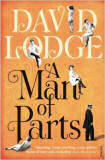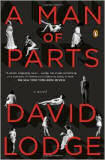“I told you so. You damned fools.”
Epitaph proposed by H.G. Wells
nuclear weapons
wars in the air
feminism - rebecca west's comments
bibliography and review
end notes
related further reading
H.G. Wells was a visionary. As well as his famous science-fiction stories such as The First Men in the Moon, The Invisible Man, The Time Machine, The Shape of Things to Come, The War in the Air, and The War of the Worlds, H.G. Wells produced more important writings which are relevant today, .
He also wanted to form a huge, free, worldwide encyclopedia, so anticipating Wikipedia.
nuclear weapons
The first nuclear chain reaction was established in Chicago in 1942. Wells died in 1946.
Wells predicted a form of atomic bomb in 1914.
He predicted the problem of harnessing nuclear power would be solved in 1933.
"Wells's knowledge of atomic physics came from reading William Ramsay, Ernest Rutherford, and Frederick Soddy; the latter discovered the
disintegration of uranium. Frederick Soddy's book Wealth, Virtual Wealth and
Debt praises The World Set Free. Wells's novel may even have
influenced the development of nuclear weapons, as the physicist Leó Szilárd read the book in 1932, the same year the neutron was
discovered. In 1933 Szilárd conceived the idea of neutron chain
reaction, and filed for patents on it in 1934.
"Wells's "atomic bombs" have no more force than ordinary high explosive
and are rather primitive devices detonated by a "bomb-thrower" biting
off "a little celluloid stud." They consist of "lumps of pure
Carolinum" that induce "a blazing continual explosion" whose half-life
is seventeen days, so that it is "never entirely exhausted," so that "to this day the battle-fields and bomb fields of that frantic time in
human history are sprinkled with radiant matter, and so centres of
inconvenient rays." [From wikipedia.org]

"Never before in the history of warfare had there been a continuing
explosive; indeed, up to the middle of the twentieth century the only
explosives known were combustibles whose explosiveness was due
entirely to their instantaneousness; and these atomic bombs which
science burst upon the world that night were strange even to the men
who used them. Those used by the Allies were lumps of pure Carolinum,
painted on the outside with unoxidised cydonator inducive enclosed
hermetically in a case of membranium. A little celluloid stud between
the handles by which the bomb was lifted was arranged so as to be
easily torn off and admit air to the inducive, which at once became
active and set up radio-activity in the outer layer of the Carolinum
sphere. This liberated fresh inducive, and so in a few minutes the
whole bomb was a blazing continual explosion. The Central European
bombs were the same, except that they were larger and had a more
complicated arrangement for animating the inducive.
"Always before in the development of warfare the shells and rockets
fired had been but momentarily explosive, they had gone off in an
instant once for all, and if there was nothing living or valuable
within reach of the concussion and the flying fragments then they were
spent and over. But Carolinum, which belonged to the beta group of
Hyslop's so-called 'suspended degenerator' elements, once its
degenerative process had been induced, continued a furious radiation
of energy and nothing could arrest it. Of all Hyslop's artificial elements, Carolinum was the most heavily stored with energy and the
most dangerous to make and handle. To this day it remains the most
potent degenerator known. What the earlier twentieth-century chemists
called its half period was seventeen days; that is to say, it poured
out half of the huge store of energy in its great molecules in the
space of seventeen days, the next seventeen days' emission was a half
of that first period's outpouring, and so on. As with all radio-active
substances this Carolinum, though every seventeen days its power is halved, though constantly it diminishes towards the imperceptible, is
never entirely exhausted, and to this day the battle-fields and bomb
fields of that frantic time in human history are sprinkled with
radiant matter, and so centres of inconvenient rays.
"What happened when the celluloid stud was opened was that the
inducive oxidised and became active. Then the surface of the Carolinum began to degenerate. This degeneration passed only slowly into the
substance of the bomb. A moment or so after its explosion began it was
still mainly an inert sphere exploding superficially, a big, inanimate
nucleus wrapped in flame and thunder. Those that were thrown from
aeroplanes fell in this state, they reached the ground still mainly
solid, and, melting soil and rock in their progress, bored into the
earth. There, as more and more of the Carolinum became active, the
bomb spread itself out into a monstrous cavern of fiery energy at the base of what became very speedily a miniature active volcano. The Carolinum, unable to disperse, freely drove into and mixed up with a
boiling confusion of molten soil and superheated steam, and so
remained spinning furiously and maintaining an eruption that lasted
for years or months or weeks according to the size of the bomb
employed and the chances of its dispersal. Once launched, the bomb was
absolutely unapproachable and uncontrollable until its forces were
nearly exhausted, and from the crater that burst open above it, puffs
of heavy incandescent vapour and fragments of viciously punitive rock
and mud, saturated with Carolinum, and each a centre of scorching and
blistering energy, were flung high and far.
"Such was the crowning triumph of military science, the ultimate
explosive that was to give the 'decisive touch' to war.... "[From The world set free, H.G. Wells, ch .2]
wars in the air
"HERE in 1941 The War in the Air is being reprinted once again. It was
written in 1907 and first published in 1908. It was reprinted in 1921,
and then I wrote a preface which also I am reprinting. Again I ask the
reader to note the warnings I gave in that year, twenty years ago. Is
there anything to add to that preface now? Nothing except my epitaph.
That, when the time comes, will manifestly have to be: “I told you so.
You damned fools.” "
[From The War in the Air, Wells, 1941, preface.]
feminism - rebecca west's comments
Rebecca West was a lover of H. G. Wells, by whom she had a child.
"I myself have never been able to find out precisely what feminism is: I only know that people call me a feminist whenever I express sentiments that differentiate me from a prostitute or a doormat."
[The Clarion, 14 November, 1913]
I would expect Rebecca West means by doormat, to play the housemouse. She wanted to pursue her own career.
The early 'feminists' had much problem trying to work out how 'to have it all' despite the imperatives of nature.
The Fabians mostly wanted the state to pay women to support their children and make them independent. This is the policy still pursued by 'New' Labour,
and a desperate failure of course.
West had a more robust view that women should work to support themselves.
Wells pointed out that this would mean many of them failing in the market competition, thereby falling into prostitution or penury.
These are problems the present backward society has still to resolve, driven as it is by the foolishness of jealousy and the dysfunctional nuclear family model.
bibliography and review
A Man of Parts by David Lodge |

|
Vintage, pbk, 2012
ISBN-10: 0099556081
1ISBN-13: 978-0099556084
amazon.com
£8.99 [amazon.co.uk] {advert} |
Kindle edition
857 KB
Print edition: 449 pages
Vintage Digital, 2011
ASIN: B004RPITY8
amazon.com |
 |
Penguin Books, reprint, 2012
ISBN-10: 9780143122098
ISBN-13: 978-0143122098
$16.06 [amazon.com] {advert} |
|
end notes
- H.G. Wells lived from 21 September, 1866 to 13 August, 1946
|

advertising disclaimer |





















